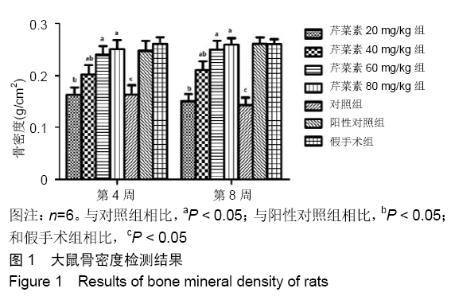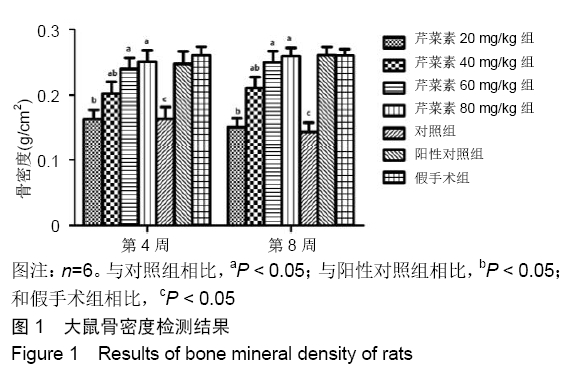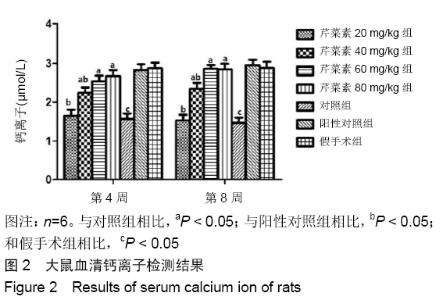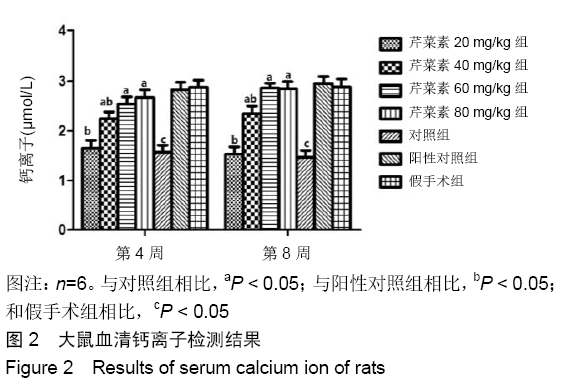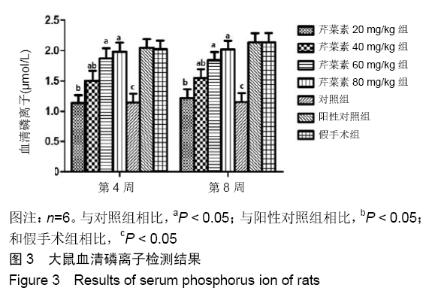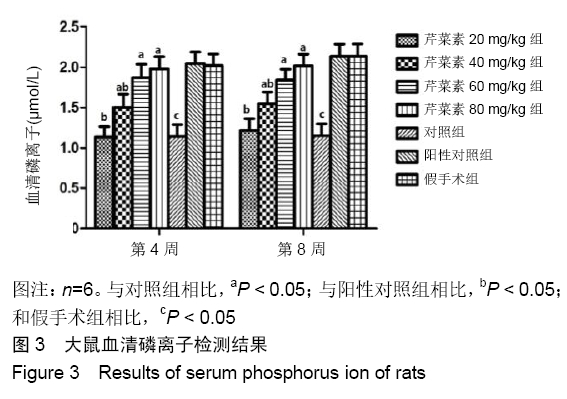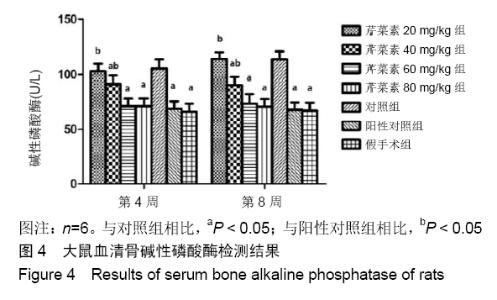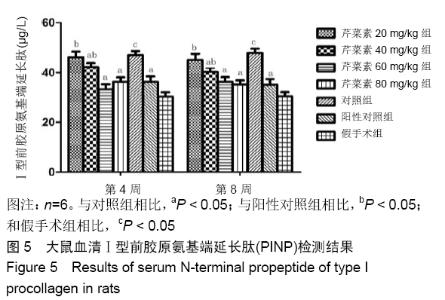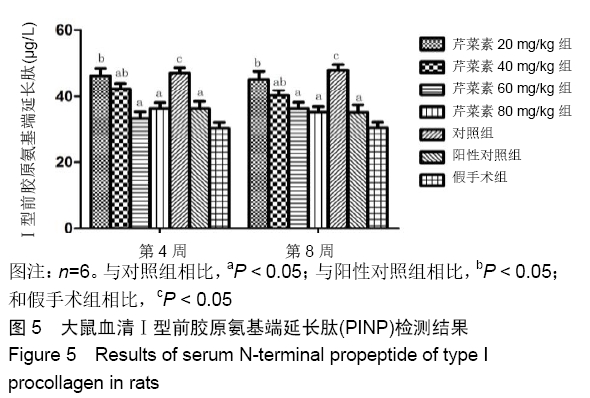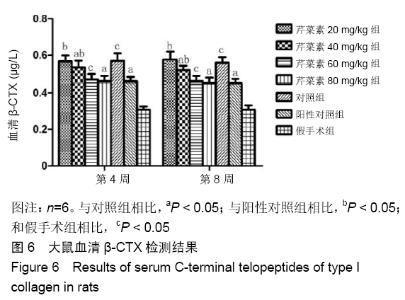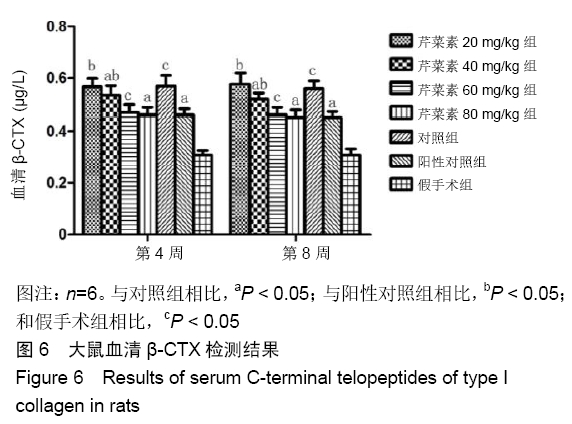[1] COMPSTON JE, MCCLUNG MR, LESLIE WD. Osteoporosis.Lancet. 2019;393:364-376.
[2] GANJI R, MOGHBELI M, SADEGHI R,et al. Prevalence of osteoporosis and osteopenia in men and premenopausal women with celiac disease: a systematic review. Nutr J, 2019;18:9.
[3] YEDAVALLY-YELLAYI S, HO AM, PATALINGHUG EM. Update on Osteoporosis. Prim Care. 2019;46:175-190.
[4] 王欣荣,应汉杰,欧阳平凯. 骨质疏松症的发病机理及其治疗[J].生物工程进展, 2001,21(3):54-56,49.
[5] LI F, LANG F, ZHANG H, et al. Apigenin Alleviates Endotoxin-Induced Myocardial Toxicity by Modulating Inflammation, Oxidative Stress, and Autophagy. Oxid Med Cell Longev. 2017;2017:2302896.
[6] NABAVI SF, KHAN H, D'ONOFRIO G, et al. Apigenin as neuroprotective agent: Of mice and men. Pharmacol Res. 2018; 128:359-365.
[7] NABAVI SM, HABTEMARIAM S, DAGLIA M, et al. Apigenin and Breast Cancers: From Chemistry to Medicine. Anticancer Agents Med Chem.2015;15:728-735.
[8] WANG M, FIRRMAN J, ZHANG L,et al. Apigenin Impacts the Growth of the Gut Microbiota and Alters the Gene Expression of Enterococcus. Molecules. 2017;22(8). pii: E1292.
[9] 李俐,郑旭仙,曾雅芬,等.针刺肾俞足三里干预绝经后骨质疏松症大鼠模型的影响[J].中国中医药现代远程教育, 2019, 17(1):107-111.
[10] 盛玲玲,李先娜,霍金海,等. 骨质疏松症动物模型及评价方法研究进展[J].黑龙江中医药,2018,47(6):111-113.
[11] 王熙,张浩,张璐,等.去势雌兔骨质疏松模型的建立[J].临床医药文献电子杂志,2019,6(13):6-7,10.
[12] 王玉明.芹菜素对小鼠肺损伤抗炎活性的体外评价[J].畜牧兽医杂志, 2018,37(2):1-5.
[13] 黄好武,黄欢文,姜一平,等. 芹菜素对肺癌细胞的抗增殖作用和抗肿瘤药物的增敏作用[J].中国药业, 2017, 26(5):20-22.
[14] BANDYOPADHYAY S, LION JM, MENTAVERRI R, et al. Attenuation of osteoclastogenesis and osteoclast function by apigenin.Biochem Pharmacol.2006; 72:184-197.
[15] GOTO T, HAGIWARA K, SHIRAI N, et al. Apigenin inhibits osteoblastogenesis and osteoclastogenesis and prevents bone loss in ovariectomized mice. Cytotechnology. 2015; 67:357-365.
[16] PARK JA, HA SK, KANG TH,et al. Protective effect of apigenin on ovariectomy-induced bone loss in rats. Life Sci.2008;82:1217-1223.
[17] ZHANG X, ZHOU C, ZHA X, et al. Apigenin promotes osteogenic differentiation of human mesenchymal stem cells through JNK and p38 MAPK pathways. Mol Cell Biochem.2015;407:41-50
[18] GAMBACCIANI M, LEVANCINI M. Hormone replacement therapy and the prevention of postmenopausal osteoporosis. Prz Menopauzalny. 2014;13:213-220.
[19] ERIKSEN EF. Hormone replacement therapy or SERMS in the long term treatment of osteoporosis. Minerva Ginecol.2012; 64:207-221.
[20] BOWRING CE, FRANCIS RM. National Osteoporosis Society's Position statement on hormone replacement therapy in the prevention and treatment of osteoporosis. Menopause Int.2011;17:63-65.
[21] MAICHUK E, VOEVODINA IV, MITROKHINA TV, et al. The risk of atherosclerosis and osteoporosis development in post-ovariectomy syndrome women during hormone replacement therapy. Ter Arkh. 2014;86:75-79.
[22] CHATTERJEE R, KATZ M, BAJORIA R. Use of hormone replacement therapy for correction of high turnover bone disease in hypogonadal beta-Thalassemia major patients presenting with osteoporosis: comparison with idiopathic premature ovarian failure. Hemoglobin. 2011;35:653-658.
[23] CELLI M, D'EUFEMIA P, PERSIANI P, et al. Clinical and biochemical response to neridronate treatment in a patient with osteoporosis- pseudoglioma syndrome(OPPG). Osteoporos Int.2017;28:3277-3280.
[24] GAUDIO A, FIORE CE. Successful neridronate therapy in pregnancy- associated osteoporosis. Clin Cases Miner Bone Metab.2016;13: 241-243.
[25] 李平,林煜,朱曦,等.补肾健脾方影响高脂肪饮食骨质疏松模型大鼠脂代谢及瘦素的变化[J].中国组织工程研究, 2019, 23(3):470-475.
[26] 俞之胤,李晓华,隋欣,等.人参总皂苷防治原发性骨质疏松[J]. 中国老年学杂志, 2018,38(21):5288-5290.
[27] 蒋益萍,夏天爽,张志伟,等.淫羊藿和仙茅有效部位配伍防治骨质疏松的代谢组学研究[J].药学服务与研究, 2018, 18(5):326-331.
[28] NIAN H, MA MH, NIAN SS,et al. Antiosteoporotic activity of icariin in ovariectomized rats. Phytomedicine. 2009;16:320-326.
[29] 张巧慧,胡玲,李婷.雌二醇片/雌二醇地屈孕酮片复合包装联合阿仑膦酸钠片治疗卵巢早衰合并骨量减少及骨质疏松症患者临床疗效分析[J].中国药物与临床,2018,18(6):987-989.
[30] 郑莎,弓慧杰. 围绝经期妇女雌激素水平与骨质疏松的关系研究[J].中国妇幼保健, 2018, 33(8):1806-1808.
[31] 周玉珊. 激素替代疗法联合阿仑膦酸钠治疗围绝经期妇女骨质疏松症的效果观察[J].当代医学, 2018, 24(36):82-83.
|
